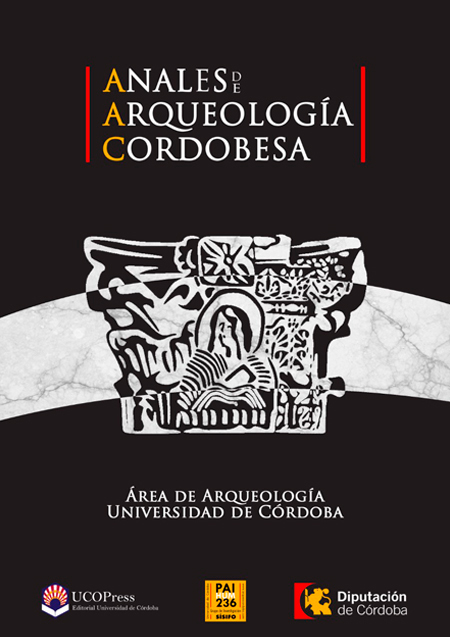In parvis rebus obliti: household economies in the Hispanoroman rural sites
DOI:
https://doi.org/10.21071/aac.v0i25-26.6418Keywords:
Roman villae, farms, and villages, Household Archaeology, Domestic modes of production and consumption, Roman Hispania.Abstract
In the last decades, the publication of several survey projects on the Roman rural landscapes has changed our perception over these ancient communities. However, the increase of archaeological evidence available has not been accompanied with a similar growth in the current knowledge on the economic and social structures of these regions. This discussion is used as introduction for the presentation of an archaeological proposal for the analysis of this issue, based in the more anthropological tradition of Household Archaeology, and oriented to the study of domestic modes of production and consumptionperformed by Roman rural communities. The proposal is illustrated by its application in a comparative study of Late Roman (III-IV cent. AD) domestic economies of different Hispanoromanvillae.Downloads
Download data is not yet available.
Downloads
Published
2015-12-01
How to Cite
BERMEJO TIRADO, J. (2015). In parvis rebus obliti: household economies in the Hispanoroman rural sites. Anales De Arquelogía Cordobesa, (25-26), 145–168. https://doi.org/10.21071/aac.v0i25-26.6418
Issue
Section
ARTICLES
License
Aquellos autores/as que tengan publicaciones con esta revista, aceptan los términos siguientes:- Los autores/as conservarán sus derechos de autor y garantizarán a la revista el derecho de primera publicación de su obra, el cuál estará simultáneamente sujeto a la Licencia de reconocimiento de Creative Commons que permite a terceros compartir la obra siempre que se indique su autor y su primera publicación esta revista.
- Los autores/as podrán adoptar otros acuerdos de licencia no exclusiva de distribución de la versión de la obra publicada (p. ej.: depositarla en un archivo telemático institucional o publicarla en un volumen monográfico) siempre que se indique la publicación inicial en esta revista.
- Se permite y recomienda a los autores/as difundir su obra a través de Internet (p. ej.: en archivos telemáticos institucionales o en su página web) antes y durante el proceso de envío, lo cual puede producir intercambios interesantes y aumentar las citas de la obra publicada. (Véase El efecto del acceso abierto).


